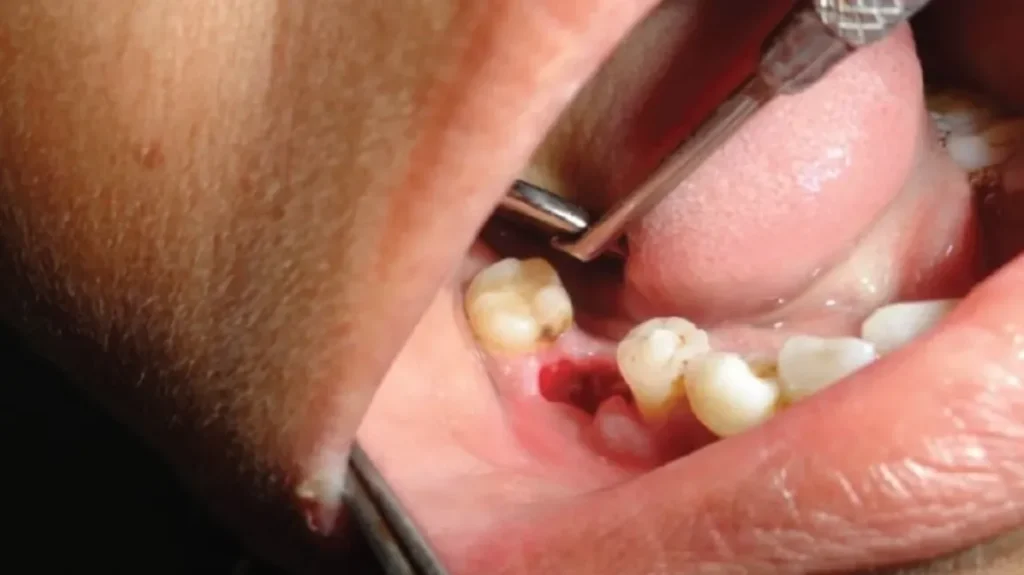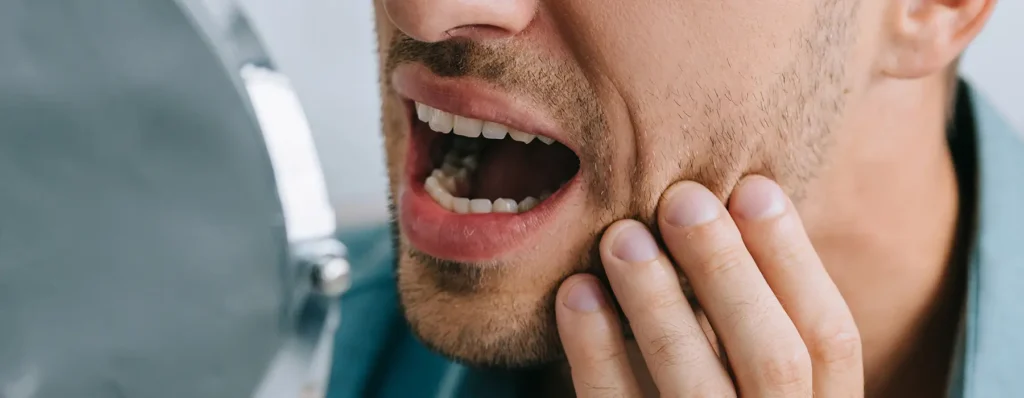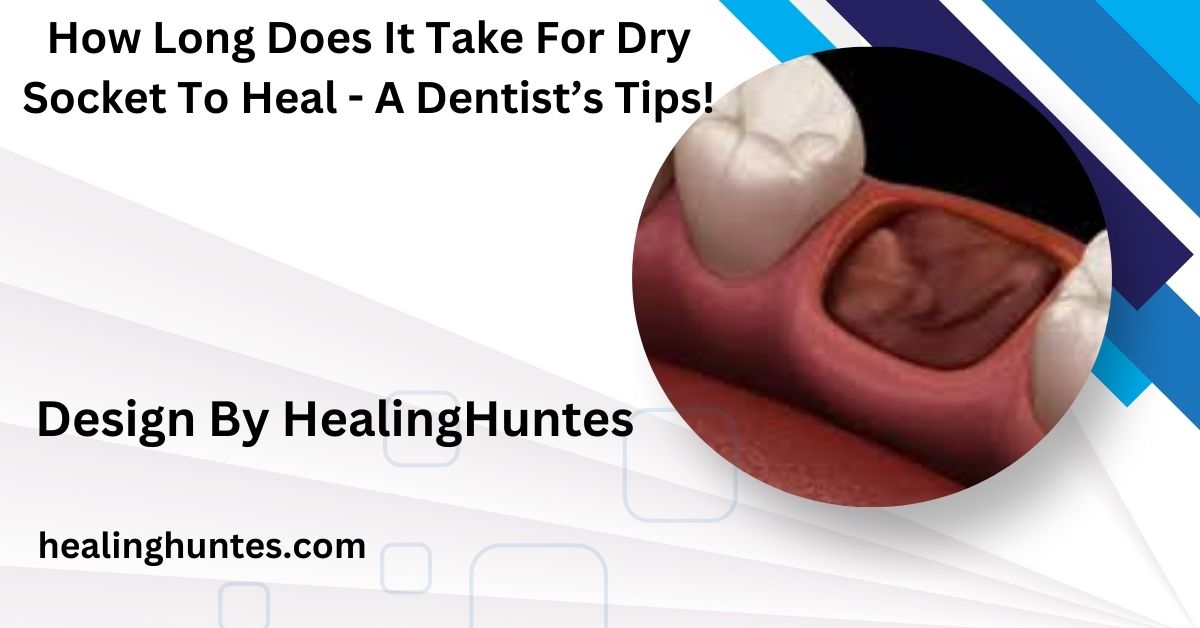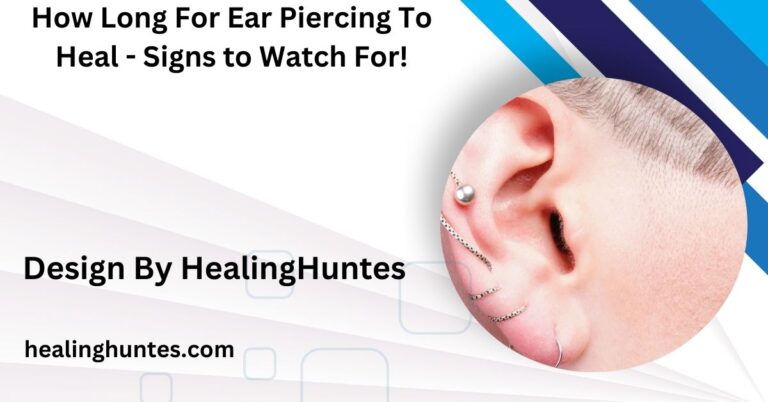How Long Does It Take For Dry Socket To Heal – A Dentist’s Tips!
Dry socket typically heals in 7-10 days with proper treatment, but early care and prevention are key to faster recovery.
In this article, we explore the healing timeline, causes, treatments, and prevention tips for dry socket to ensure a smooth recovery.
What Is a Dry Socket:

Dry socket, also known as alveolar osteitis, is a dental complication that typically arises after the removal of a tooth, particularly wisdom teeth. This condition occurs when the protective blood clot at the extraction site is lost or fails to form. Without this clot, the underlying bone and nerves become exposed, leading to intense pain and increased risk of infection.
How Long Does Dry Socket Take to Heal:
Dry socket generally takes about 7-10 days to heal completely, depending on how well it is managed. While some cases may resolve more quickly with proper treatment, others can take longer if left untreated or if there are additional complications. Early intervention, good oral hygiene, and following your dentist’s recommendations can significantly speed up recovery.
Stages of Healing for Dry Socket:
Healing from dry socket typically involves three stages. Initially, severe pain develops within 2-3 days after tooth extraction due to clot loss. With proper treatment, pain subsides, and tissue begins to regenerate within a week. Complete healing generally occurs by 7-10 days, depending on care and individual health.
Also Read: How Do You Heal Razor Bumps – Causes, Treatment, and Prevention!
Initial Pain: (Days 1-3)
The pain associated with dry socket usually begins 2-3 days after tooth extraction. This is when the protective blood clot is lost, exposing the bone and nerves. You may experience severe discomfort that radiates to other parts of the face or neck.
Treatment and Relief: (Days 4-7)
Once diagnosed, your dentist may clean the socket, apply a medicated dressing, and recommend pain relief measures. Symptoms usually begin to subside within a few days of treatment. It’s essential to maintain proper oral hygiene during this stage to prevent infection.
Tissue Regeneration: (Days 8-10)
As new tissue begins to form, the pain decreases, and the socket starts to heal. By the end of this stage, most individuals experience significant relief, though complete healing may still require a few more days.
Symptoms of Dry Socket:

Recognizing the symptoms early can help ensure timely treatment. Common signs include:
- Severe pain that starts 2-3 days after tooth extraction.
- Visible bone in the socket.
- Foul taste or odor in the mouth.
- Swelling or redness around the extraction site.
If you experience these symptoms, consult your dentist immediately for appropriate care.
Causes of Dry Socket:
Dry socket can occur due to several factors, such as:
- Improper aftercare, like rinsing the mouth too vigorously.
- Smoking or using tobacco products, which hinder healing.
- Oral infections or trauma to the extraction site.
- Certain medications that affect blood clotting.
Avoiding these risk factors can reduce the likelihood of developing dry socket.
Treatment for Dry Socket:
Treatment focuses on relieving pain and promoting healing. Dentists may apply medicated dressings to soothe the socket and recommend pain relievers for additional comfort. Maintaining oral hygiene and following prescribed care instructions are essential for a smoother recovery process.
Also Read: How Long Does A Broken Arm Take To Heal – Healing Time Differences!
Medicated Dressings:
Your dentist may place medicated dressings directly into the socket to alleviate pain and encourage healing. These dressings contain soothing agents and are typically replaced every few days. They provide relief while shielding the exposed area from further irritation.
Pain Relief Medications:
Over-the-counter pain relievers like ibuprofen or acetaminophen are often effective for managing discomfort. If the pain is severe, your dentist might prescribe stronger medications for temporary relief. Always take medications as directed to avoid complications.
Maintaining Oral Hygiene:
Maintaining oral hygiene is crucial for recovery. Rinse your mouth gently with a saltwater or antiseptic solution as recommended by your dentist. Avoid using straws or forceful spitting, as these actions can dislodge the clot and delay healing.
Preventing Dry Socket:
Prevention starts with proper aftercare, such as avoiding smoking, spitting, or vigorous rinsing after extraction. Adhering to your dentist’s instructions and practicing gentle oral care can significantly reduce the risk. A focus on healthy habits ensures better healing outcomes. Prevention is always better than cure. Here are some tips to minimize the risk of dry socket:
Follow Post-Extraction Instructions:
It is essential to follow your dentist’s aftercare advice to ensure proper healing. Avoid solid foods that could irritate the wound and refrain from spitting or rinsing during the first 24 hours. These precautions help protect the blood clot and reduce the risk of dry socket.
Avoid Smoking and Tobacco Use:
Smoking interferes with the formation of a blood clot, introducing harmful chemicals that can slow down the healing process. The suction motion from smoking can also dislodge the clot, leading to dry socket. Quitting or temporarily pausing smoking during recovery is strongly advised.
Practice Gentle Oral Care:
Use a soft-bristled toothbrush to clean your teeth without touching the extraction site directly. After 24 hours, rinse your mouth gently with warm saltwater to keep the area clean. Avoid vigorous rinsing to prevent disturbing the healing process.
FAQ’s
1. How can I tell if I have a dry socket?
Dry socket symptoms include severe pain, visible bone at the extraction site, foul breath, and swelling around the area.
2. What should I do if I suspect dry socket?
Contact your dentist immediately. They may clean the socket, apply a medicated dressing, and recommend pain management techniques.
3. Can dry socket heal on its own?
While mild cases may heal without intervention, treatment significantly reduces pain and speeds up recovery.
4. Is dry socket more common after wisdom tooth extraction?
Yes, dry socket is more common after wisdom teeth removal due to the complexity of the procedure and the location of the teeth.
5. Can I prevent dry socket entirely?
Although not guaranteed, following your dentist’s aftercare instructions and avoiding risk factors like smoking can greatly reduce the risk.
Conclusion
Healing from dry socket can be a painful but manageable process. By understanding its symptoms, causes, and treatment options, you can take proactive steps to ensure a smoother recovery. Following your dentist’s advice and practicing good oral hygiene are crucial to avoid complications and promote healing. Remember, timely care can make all the difference!
Related Posts
Also Read: How Long Does A Groin Strain Take To Heal – A Complete Guide!
Also Read: Gum Graft Healing Stages Pictures – A Complete Overview!
Also Read: Holistic Healing Collective – The Future of Wellness!






